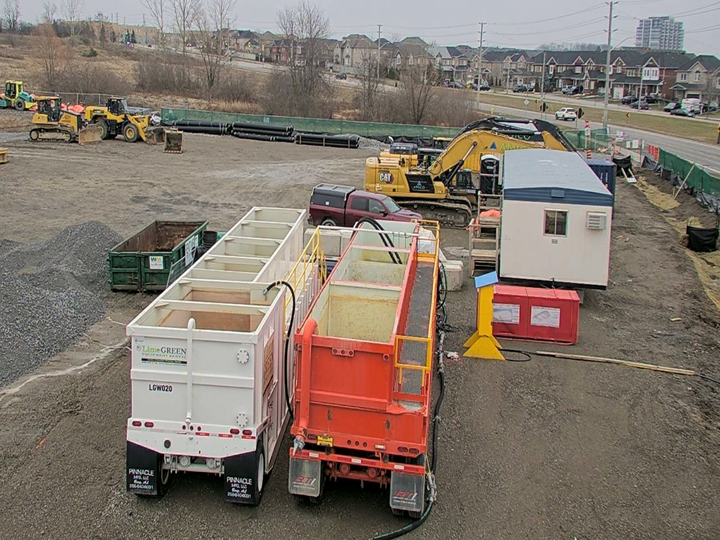Preparing a Construction Site – The Development of the New Grandview Kids
Do you know what goes into preparing a site for construction to begin?
When construction commences, the first phase is mobilization, which includes site preparation. In the case of the Grandview Children’s Treatment Centre Redevelopment Project, also known as the New Grandview Kids, site preparation includes clearing and grubbing and dewatering. These activities include safely removing excess soil and water from the site and safely relocating it.
Managing Water Levels
When developing land, site conditions can be very wet and saturated. Sometimes, site conditions are naturally susceptible to saturated soil because of soil type, terrain, heavy rains, flooding, or a high-water table. When building on sites with the listed conditions, water is removed from the site to lower groundwater levels and allow digging to begin in stable conditions. The removal of excess water from a construction site prevents hazards such as mudslides, unstable foundations, and equipment failure caused by bogging. Additionally, it ensures a worksite is ready for excavation, foundation preparation and cement footing pours. At the New Grandview Kids construction site, workers will remove approximately 355,000 litres of water from the site, equivalent to 177,500 two-litre soda bottles. For this project, the excess water undergoes a quality and quantity treatment before it is discharged into a nearby stormwater pond as seen in the image below. This technique is called dewatering.

Removing Excess Soil
Once dewatered, certain areas on site need to be excavated to prepare for the foundation pour. Excavation is the process of moving soils or other materials. In the case of the New Grandview Kids, to prepare for the foundation, approximately, 33,000 cubic metres of soil will be transported to a local company called Lafarge. This amount of soil is equivalent to 45 cargo airplanes filled with soil. Once the soil arrives at Lafarge, it will be classified as land rehabilitation and will be used to fill in a mined-out gravel pit. Excavation occurs once the ground is stable. To ensure that the ground remains stable, vibration monitoring and settlement monitoring occurs to ensure that land within 300 metres of the site is not disturbed during construction.
Reducing or Diverting Construction Waste
Once construction is underway, one way to help decrease environmental impacts of a construction project is by reducing and diverting construction waste from landfills. This can be done by recycling or reusing materials like metals, concrete, gypsum board, cardboard, plastic and clean wood. In the development of the New Grandview Kids, 4.45 tonnes of waste will be diverted, which specifically addresses the waste management goal of “reduce and reuse”. This project is proud to implement waste diversion measures that are consistent with community goals.
A lot of preparation goes in to preparing a construction site for the building work to begin. So, the next time you see an empty plot of land at a construction site and wonder what’s going on behind the hoarding, it may just be one of these activities!
Learn more about the Grandview Kids Children’s Centre Redevelopment Project.
